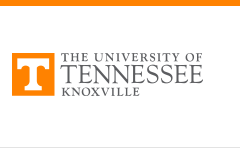Source Publication
APL Photonics
Document Type
Article
Publication Date
8-2016
DOI
10.1063/1.4954698
Abstract
Plasmonic nanoparticles are amongst the most effective ways to resonantly couple optical energy into and out of nanometer sized volumes. However, controlling and/or tuning the transfer of this incident energy to the surrounding near and far field is one of the most interesting challenges in this area. Due to the dielectric properties of metallic silver (Ag), its nanoparticles have amongst the highest radiative quantum efficiencies (η), i.e., the ability to radiatively transfer the incident energy to the surrounding. Here we report the discovery that bimetallic nanoparticles of Ag made with immiscible and plasmonically weak Co metal can show comparable and/or even higher η values. The enhancement is a result of the narrowing of the plasmon bandwidth from these bimetal systems. The phenomenological explanation of this effect based on the dipolar approximation points to the reduction in radiative losses within the Ag nanoparticles when in contact with cobalt. This is also supported by a model of coupling between poor and good conductors based on the surface to volume ratio. This study presents a new type of bandwidth engineering, one based on using bimetalnanostructures, to tune and/or enhance the quality factor and quantum efficiency for near and far-field plasmonic applications.
Recommended Citation
Malasi, A., Taz, H., Ehrsam, M., Goodwin, J., Garcia, H., & Kalyanaraman, R. (2016). Enhanced and tunable optical quantum efficiencies from plasmon bandwidth engineering in bimetallic CoAg nanoparticles. APL Photonics, 1(7), 076101. doi: 10.1063/1.4954698
Submission Type
Publisher's Version


Comments
This article was published openly thanks to the University of Tennessee Open Publishing Support Fund.
Licensed under a Creative Commons Attribution 4.0 International license.